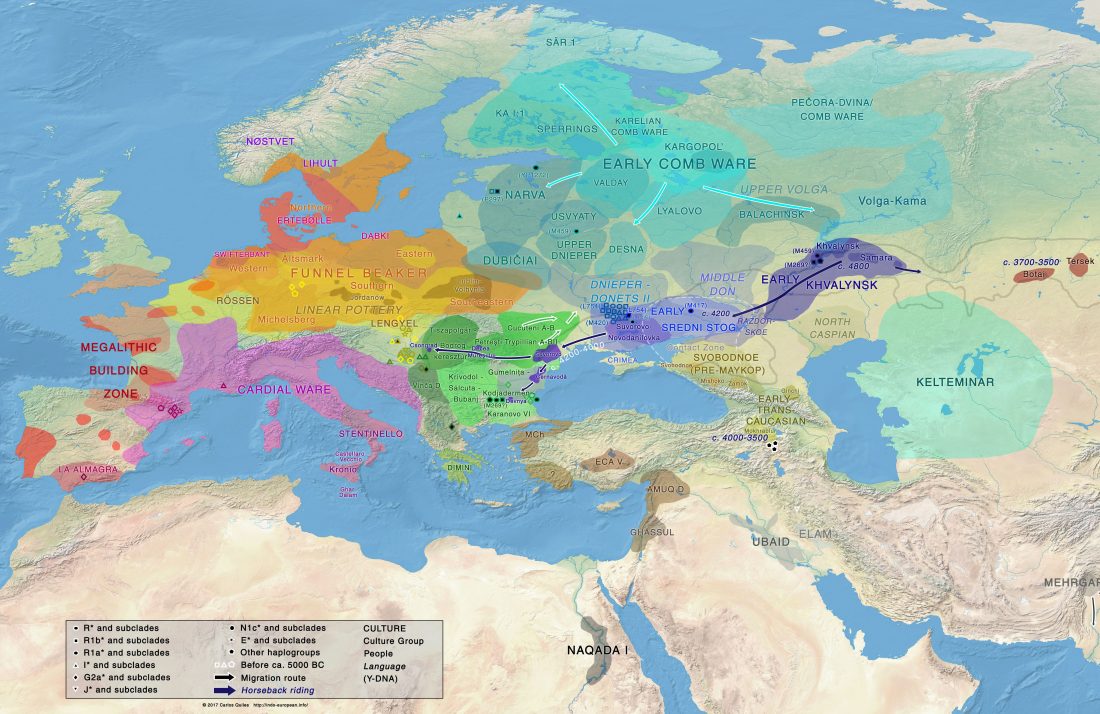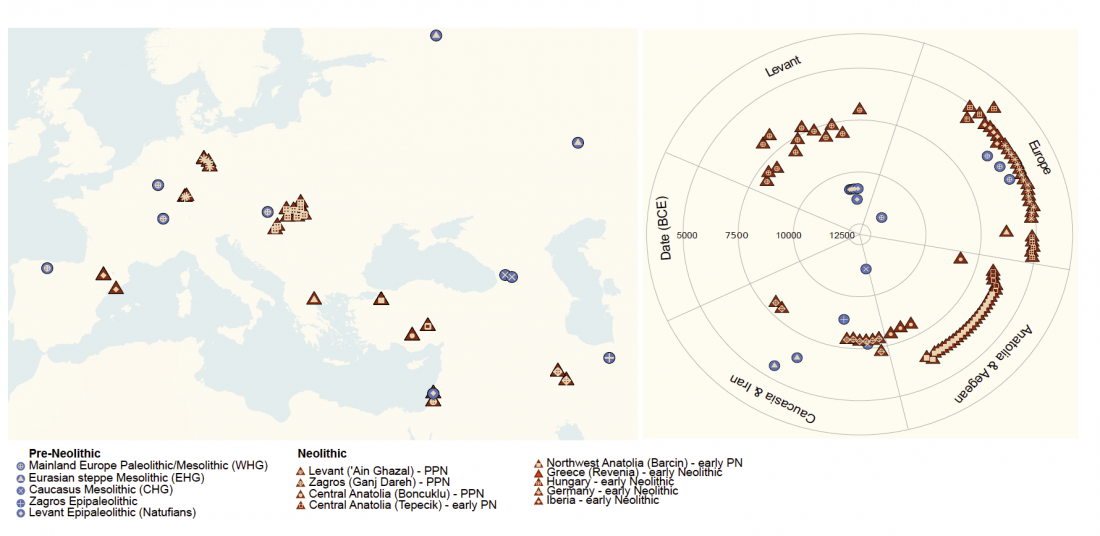The latest publication of Documenta Praehistorica, vol. 44 (2017) is a delight for anyone interested in Indo-European and Uralic studies, whether from a linguistic, archaeological, anthropological, or genetic point of view. Articles are freely downloadable from the website.
The following is a selection of articles I deem more interesting, but almost all are.
On the Corded Ware culture
Do 14C dates always turn into an absolute chronology? The case of the Middle Neolithic in western Lesser Poland, by Marek Novak:
… Read the rest “Recent archaeological finds near Indo-European and Uralic homelands”In the late 5th, 4th, and early 3rd millennia BC, different archaeological units are visible in western Lesser



